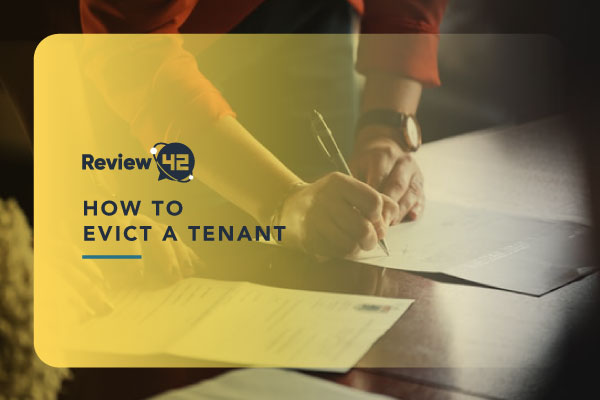



The last thing any property manager wants is to have a tenant that’s violent on their property. Unfortunately, it does happen from time to time and you need to be prepared for that. If you do find yourself in this situation, an eviction will almost certainly be necessary. However, evictions are difficult and involve processes that take a lot of time, energy, and resources. Fortunately, there are a lot of things that you can do beforehand to make the eviction process easier if you find yourself with a violent tenant who won’t leave your property. This guide will walk you through everything you need to know about evicting a violent tenant.
Before you start the eviction process, you need to talk to your tenant. Ask them what’s going on, and what they need to stay on the property, and try to work out a suitable resolution. The first thing you should do is ask the tenant why they are being violent. After all, there might be a good reason that they are causing problems. There may be something going on in their life that is causing them to act this way, and there could be something that you can do to help. For example, if they have kids and they’re being loud, the best thing you can do is work with them to try to resolve the issue. You can offer to mediate with the tenants, work out a different schedule, or even offer to provide them with soundproofing. The important thing is to work with the tenants. It’s not worth evicting tenants just because of a noise complaint if there are better options available.
If talking to your tenant doesn’t work, you may need to get a restraining order. This is when a judge orders the tenant to stay away from you and/or the property. You may need to get a restraining order if you’ve been threatened or attacked by your tenant. If you are able to prove to the judge that you’re in danger, they will issue a restraining order against the tenant. This can come in the form of either a verbal or written order. Verbal restraining orders are only temporary, so you’ll need to file for a written order. However, verbal restraining orders can buy you some time to get everything together for the written order. The restraining order should be served to the tenant. You’ll also need to file a copy with the court. This gives you a legal basis to evict your tenant.
If nothing else works, you’ll have to start the eviction process. Before you do anything, you need to make sure that you know your state’s eviction laws. In most states, the eviction process typically includes the following steps: - Execute the lease - Read the lease to determine if there’s a breach of lease clause. If there is, you can start the eviction process immediately. - Issue a notice to vacate - If there isn’t a breach of lease clause in your lease, you need to give your tenant a notice to vacate. - Serve the tenant - You’ll need to serve the notice to vacate on the tenant in person. - Wait for the eviction process to finish - You’ll need to wait for the notice period to end. - File for the eviction - After the notice period has ended, you can then file for the eviction.
After you’ve successfully evicted your tenant, you’ll want to go through the post-eviction clean-up process. The first thing you need to do is check for damages. - You should check your property for damages caused by the tenant. You may need to file a claim against the tenant for any damages they caused to the property. - You should check for illegal activities. If the tenant was dealing drugs on the property, you may want to call the police. - You may need to change your locks. If the tenant has a key, they can probably still get into the property. - You may want to consider hiring a cleaning service. This will ensure that the property is thoroughly cleaned. - You’ll want to change the locks on any rooms that the tenant had access to. This will prevent them from tampering with the property. - You’ll also want to thoroughly check your tenant records and make sure that the tenant is removed from the system.
Unfortunately, it does happen from time to time and you need to be prepared for that. If you do find yourself in this situation, an eviction will almost certainly be necessary. Fortunately, there are a lot of things that you can do beforehand to make the eviction process easier. This guide will walk you through everything you need to know about evicting a violent tenant. Hopefully, this guide has given you a better understanding of how to handle a violent tenant and how to evict them from your property. Keep in mind that the process can be long, so you should start the process as soon as possible.